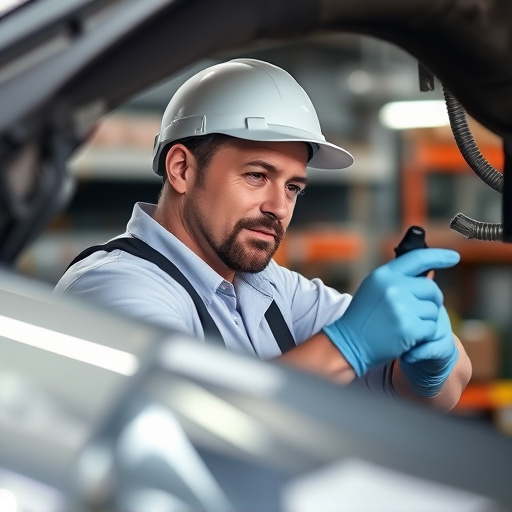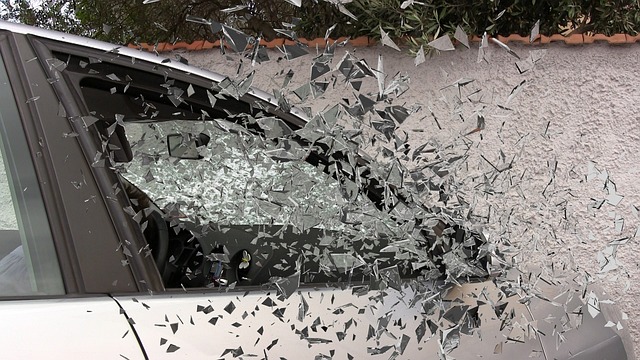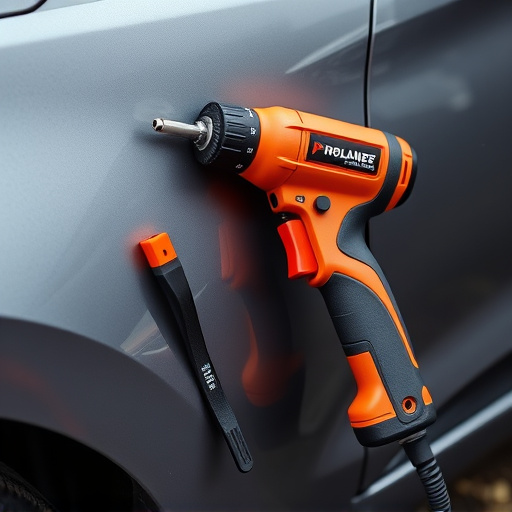The automotive industry is transitioning to environmentally safe repair practices due to regulatory pressures and consumer demand. Traditional toxic chemicals are being replaced by biodegradable materials, water-based paints, and efficient energy systems. This shift minimizes environmental impact, reduces costs, enhances reputation, and contributes to a greener future for auto body services, driven by evolving global policies promoting sustainability and circular economy principles.
In today’s eco-conscious world, the demand for environmentally safe repair practices is soaring. Stricter environmental policies are driving innovation across industries, and the repair sector is no exception. This article delves into the growing need for eco-friendly repairs, exploring key policies that are reshaping the industry. We examine the benefits of these sustainable practices and look ahead to their promising future, highlighting how environmentally safe repair is not just a trend but a necessary metamorphosis.
- Understanding the Need for Environmentally Safe Repair
- Key Environmental Policies Shaping Repair Industry Innovations
- Benefits and Future Prospects of Eco-Friendly Repair Practices
Understanding the Need for Environmentally Safe Repair

In today’s world, where environmental consciousness is on the rise, there is a growing need for environmentally safe repair practices within the automotive industry. The traditional autobody repairs and auto body shop processes often involve the use of toxic chemicals and materials that contribute to pollution and pose risks to both workers and the surrounding environment. As such, there is an increasing demand for greener alternatives that minimize these negative impacts.
This shift towards environmentally safe repair is not just a response to regulatory pressures but also a strategic move by auto body shop owners and technicians to stay relevant and competitive in the market. By adopting eco-friendly practices, such as using biodegradable materials, water-based paints, and efficient energy systems for dent removal, these businesses can attract environmentally conscious customers while also reaping the benefits of reduced operational costs and improved reputation.
Key Environmental Policies Shaping Repair Industry Innovations

The landscape of environmental policies is increasingly shaping the innovations within the repair industry, particularly in the realm of environmentally safe repair practices. Stricter regulations on emissions and waste management have prompted businesses to adopt more sustainable approaches, driving advancements in auto body services and fleet repair services alike. Companies are now investing heavily in developing eco-friendly technologies and materials that reduce the environmental impact of their operations. For instance, the use of biodegradable resins and water-based paints in car scratch repair has gained traction due to its lower toxicity and faster degradation rates compared to traditional products.
Moreover, policies promoting circular economy principles have inspired innovative business models, such as recycling programs for automotive parts and materials recovery from end-of-life vehicles. These initiatives not only foster sustainability but also create new revenue streams for fleet repair services by offering cost-effective solutions for eco-conscious businesses. As environmental policies continue to evolve, the repair industry is poised to see even more groundbreaking innovations that prioritize both economic viability and environmental stewardship, ultimately contributing to a greener future for auto body services and beyond.
Benefits and Future Prospects of Eco-Friendly Repair Practices

The adoption of environmentally safe repair practices offers a multitude of benefits for both businesses and consumers. By prioritizing eco-friendly methods in automotive body work, such as using biodegradable materials, reducing hazardous waste, and implementing efficient recycling programs, repair shops can significantly minimize their environmental impact. This shift not only contributes to a cleaner, healthier planet but also fosters a positive public image for the industry, appealing to environmentally conscious customers.
Looking ahead, the future of environmentally safe repair appears promising. Innovations in technology and materials science continue to drive the development of advanced, sustainable solutions for automotive body work, including car dent repair and autobody repairs. As regulatory bodies worldwide tighten environmental standards, businesses that embrace these practices stand to gain a competitive edge while making a meaningful contribution to global sustainability efforts.
Environmental policies are catalyzing a significant shift towards environmentally safe repair practices. By addressing the need for more sustainable solutions, these policies are driving innovation across the industry. As eco-friendly repair methods gain traction, we can expect to see reduced environmental impact, cost savings, and enhanced resilience in the face of climate change. Embracing these advancements is crucial for a greener future, ensuring that our repairing processes contribute positively to the planet’s well-being.













